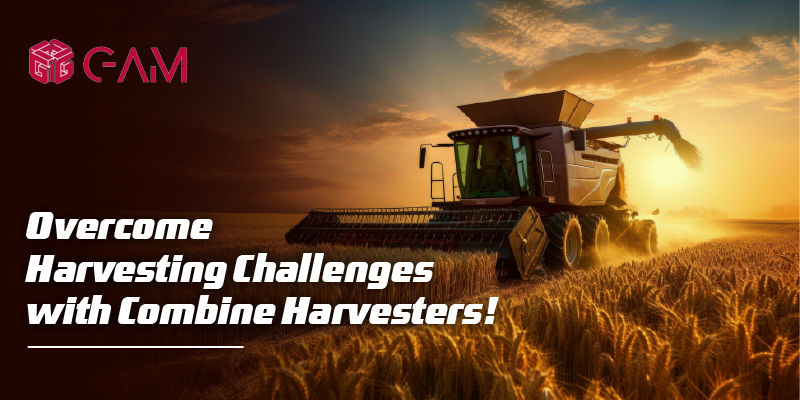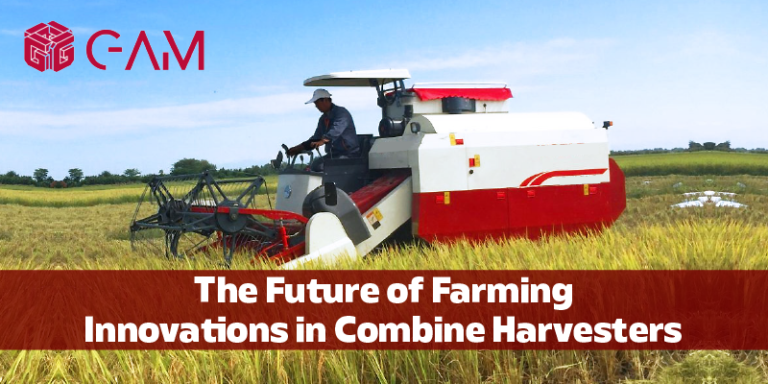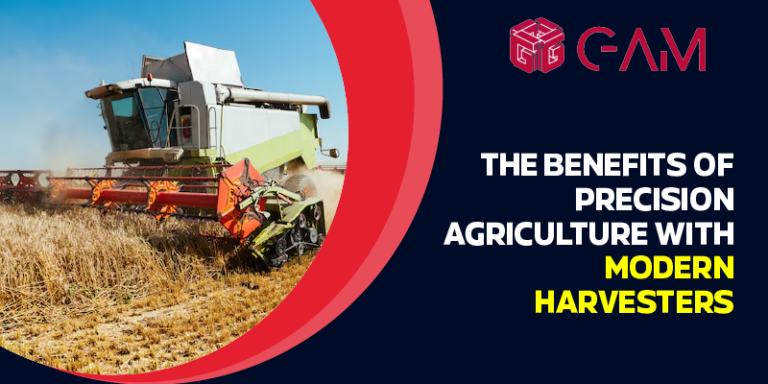Harvesting results from months of labor, making it one of the most important parts of farming. Proper harvesting is essential to guarantee a good harvest, but it is also one of the most difficult parts of agriculture. Some challenges farmers face include lodging, inconsistent crop maturation, and weed competition. A combine harvester machine can help deal with these challenges and ensure more productive harvests.
What Is A Combine Harvester?
Combine harvesters, or simply combine, are machines that harvest different types of grown seeds. The term originates from merging the three different operations of winnowing, threshing, and reaping. They are among the most economically significant labor-saving innovations. This machinery is functional as it:
- Makes it easy to harvest wide patches of crops.
- Offers different types of interchangeable heads and combines simplifying the process.
- Facilitates gentler treatment of fragile seeds.
- Produces cleaner grains, lowers crop loss, and maintains crop quality.
- Although the combine harvester machine price is initially higher, it reduces the number of workers needed and saves money in the long run.
How Does A Combine Harvester Simplify Harvesting?
1. Dealing With Lodging
A problem crops face during harvesting is lodging, when they lean or topple over because of wind, rain, or insufficient root support. This makes the crops tangled and hard to harvest, clogging the machinery and reducing overall efficiency.
When dealing with lodging, combine harvesters use unique concave designs complemented by features like rotor technology. This allows them to collect lodged crops delicately without causing any more harm. These designs use mechanisms that raise and detach stuck crops from the ground to reduce the likelihood of machinery clogs and improve overall harvesting efficiency. As a result, farmers get better-harvested crops with less fuel usage and less wear and tear on the machinery.
2. Grain Quality
Poor washing and threshing practices can result in lower-quality grains. Combine harvesters improve grain quality by using advanced threshing and cleaning systems. These systems efficiently separate the grain from the chaff and other debris, leaving a clean, uniform product ready for storage or sale.
3. Weed Competition
Insect and weed competition has long been an issue for farmers. Weeds often thrive in crops, stealing their water, nutrients, and sunlight and lowering yields, making them less valuable. Traditional weed control methods commonly include using chemicals or employing human labor, both of which have drawbacks in terms of cost, time, and environmental impact. Investing in the best harvester machine can help with weed competition by:
- Minimizing the exposure time of crops to competing weeds.
- Cutting and evenly distributing crop waste around the field to prevent weed growth.
- Using technologies to crush or destroy weed seeds.
- Gathering field weed density and presence data to develop a weed management plan.
- Efficiently managing crop residue for soil health.
4. Resolving Crop Maturity Inconsistencies
Uneven crop maturity refers to crops’ varying growth and maturity rates over a field. For optimal production and quality, crops should be harvested at their peak maturity, which can be complicated when there is a wide range of maturing times. To harvest crops using traditional methods, farmers may choose between picking them when they are too ripe or underripe, which can lower crop yields and decrease their market value.
Improved combine technology that lets users adjust the concave systems’ speed and settings is helping deal with uneven crop maturity. The machine can adapt its threshing and separating procedures to fit the different maturity levels across the field. So, instead of sacrificing quality or output for uniformity, farmers can maximize both by harvesting each field part optimally.
5. Lack Of Time
When done manually, harvesting vast fields can be tedious and costly, increasing the likelihood of crop loss. The combine harvester does this faster by combining the tasks of cutting, threshing, sorting, and cleaning all into one machine motion. Harvesting takes less time than traditional methods, meaning farmers can cover more ground in less time and reduce crop losses.
6. Poor Weather Conditions
The weather is one of the biggest challenges for harvesting. Bad weather can postpone harvesting, alter crop maturation, and increase spoiling risks. Combination harvesters are engineered to function effectively in many weather circumstances. This enables farmers to keep harvesting, even in less-than-ideal weather, which minimizes crop losses and guarantees that crops are gathered at their peak period.
Conclusion
When harvesting crops, farmers can face many difficulties. However, modern agricultural machinery, such as a combine harvester machine, makes it possible to overcome these challenges.
Traditional harvest and yield tracking methods are ineffective in today’s data-driven agricultural industry. Godabari Agro provides cutting-edge agro machinery solutions to agricultural problems. Visit our website to buy now.




